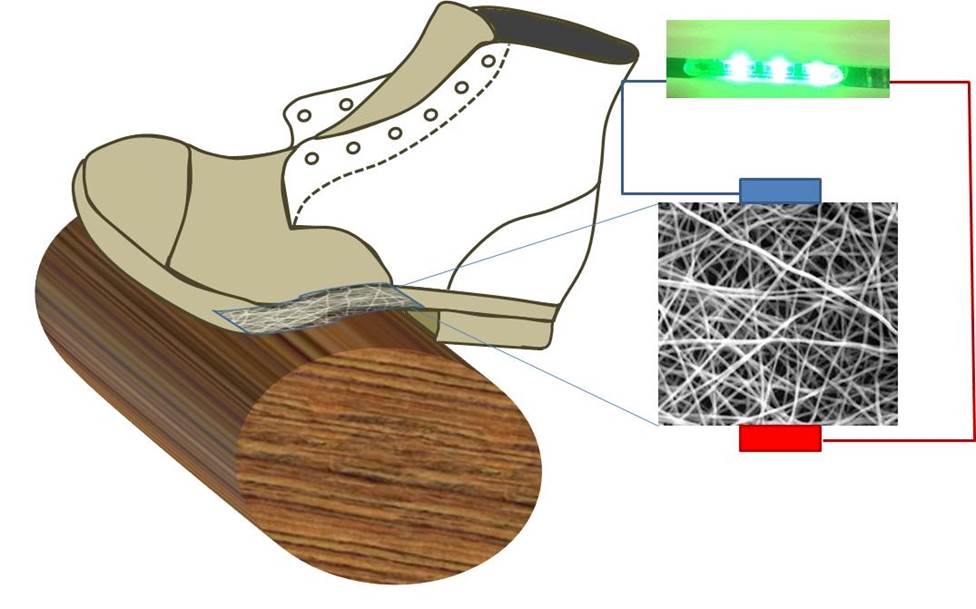▼ Reference
- Ahn Y, Lim J Y, Hong S M, Lee J, Ha J, Choi H J, Seo Y. Enhanced Piezoelectric Properties of Electrospun Poly(vinylidene fluoride)/Multiwalled Carbon Nanotube Composites Due to High β-Phase Formation in Poly(vinylidene fluoride). The Journal of Physical Chemistry C 2013; 117: 11791.
- Chen Y Q, Zheng X J, Feng X. The fabrication of vanadium-doped ZnO piezoelectric nanofiber by electrospinning. Nanotechnology 2010; 21: 055708.
- Cozza E S, Monticelli O, Marsano E, Cebe P. On the electrospinning of PVDF: influence of the experimental conditions on the nanofiber properties. Polymer International 2013; 62: 41.
- Ji S H and Yun J S. Fabrication and Characterization of Aligned Flexible Lead-Free Piezoelectric Nanofibers for Wearable Device Applications. Nanomaterials 2018; 8(4): 206; doi:10.3390/nano8040206 Open Access
- Lei T, Yu L, Zheng G, Wang L, Wu D, Sun D. Electrospinning-induced preferred dipole orientation in PVDF fibers. J Mater Sci 2015; 50: 4342.
- Liu M, Liu Y, Zhou L. Novel Flexible PVDF-TrFE and PVDF-TrFE/ZnO Pressure Sensor: Fabrication, Characterization and Investigation. Micromachines. 2021; 12(6):602 Open Access
- Mandal D, Yoon S, Kim K J. Origin of Piezoelectricity in an Electrospun Poly(vinylidene fluoride-trifluoroethylene) Nanofiber Web-Based Nanogenerator and Nano-Pressure Sensor. Macromol. Rapid Commun. 2011; 32: 831.
- Mirjalali S, Bagherzadeh R, Abrishami S, Asadnia M, Huang S, Michael A, Peng S, Wang CH, Wu S. Multilayered Electrospun/Electrosprayed Polyvinylidene Fluoride+Zinc Oxide Nanofiber Mats with Enhanced Piezoelectricity. Macromolecular Materials and Engineering 2023; 308: 2300009. Open Access
- Pan C T, Yen C K, Wang S Y, Lai Y C, Lin L, Huang J C, Kuo S W. Near-field electrospinning enhances the energy harvesting of hollow PVDF piezoelectric fibers. RSC Adv 2015a; 5: 85073.
- Pan C T, Yen, C K, Wu H C, Lin L, Lu Y S, Huang J C C, Kuo S W. Significant piezoelectric and energy harvesting enhancement of poly(vinylidene fluoride)/polypeptide fiber composites prepared through near-field electrospinning. J. Mater. Chem. 2015b; 3: 6835.
- Sengupta D, Kottapalli A G P, Chen S H, Miao J M, Kwok C Y, Triantafyllou M S, Warkiani M E, Asadnia M. Characterization of single polyvinylidene fluoride (PVDF) nanofiber for flow sensing applications. AIP Advances 2017; 7: 105205. Open Access
- Yun J S, Park C K, Jeong Y H, Cho J H, Paik J H, Yoon S H, Hwang K R. The Fabrication and Characterization of Piezoelectric PZT/PVDF Electrospun Nanofiber Composites. Nanomater Nanotechnol, 2016, 6:20. Open Access
- Zhu J, Jia L, Huang R. Electrospinning poly(l-lactic acid) piezoelectric ordered porous nanofibers for strain sensing and energy harvesting. Journal of Materials Science: Materials in Electronics 2017; 16.
▼ Credit and Acknowledgement
Author
Wee-Eong TEO View profile
Email: weeeong@yahoo.com
 ElectrospinTech
ElectrospinTech
